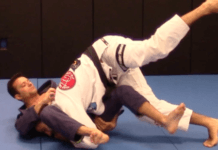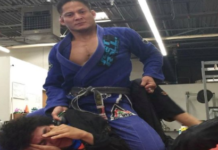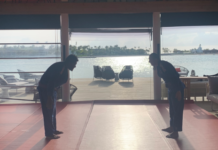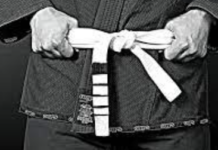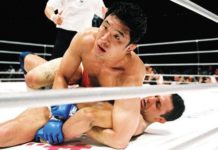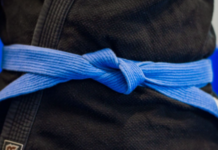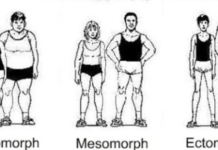There has been arguments and disagreements on whether or not training in the gi or no-gi is superior to the other. Entire lineages have trained from white to black, training only in the gi or with its frictionless counterpart, the no-gi. After speaking with various black belts, pro fighters, national and world champions, all the way to white belts, the verdict remains controversial. Let’s start by taking a look at the pros and cons of training these two variations. GI vs no-gi Jiu Jitsu
Gi vs no-gi Jiu Jitsu
Training in gi
With the use of the gi, you have more grip, which allows for sweeps, position retainment, more techniques in framing/defense. Also, a seemingly endless chain of submissions is possible with the use of gi, from the collars, sleeves and lapels of both you and your opponent.
However, training in the gi can be quite grueling. It’s hot, there’s a lot of friction, sometimes a sleeve can brush across your face and leave a burn. This friction can make passing some guards more difficult or feel more like you’re in a grinder, then someone’s half guard.
Training in no-gi
In no-gi, at first you feel like you have a limitless free range of movement until you get swept and end up in the bottom half of knee on belly. The no-gi doesn’t offer the same grip advantages as in gi – the ability to correctly maintain a position is even more important. There is also less friction. Some will say it’s a “slippery” way of doing jiu-jitsu, making things very frustrating when chasing a submission.
Gi vs no-gi
So what’s the answer to the original question: gi or no-gi? The answer is both.
Training in the gi forces a player to be more aware of the sweep options and submissions, simply because they’re way more available in the gi then without it. Therefore, those who start by training in the gi will naturally build a solid foundation in defense. Let’s not forget jiu-jitsu was invented for “self-defense”, not for “self-offense”. Also, training in the gi closely resembles defending oneself from someone wearing a jacket or sweatshirt, a situation that is worth training for real-life situations.
A no-gi player can easily learn to set up and execute a smaller set of skills, more easily and effectively than a gi player, simply because they don’t have as many options to choose from. Because there are fewer submissions and sweeps that can be performed, those who train with no-gi tend to be good at offense. No-gi players often times win matches with submissions, rather than by points.
How will the practice in gi/no-gi reflect on your long-term development?
Some argue that this contributes to make a no-gi practitioner better, since they can execute a smaller amount of attacks with greater skill, instead of having hundreds of submissions to choose from with limited skill. After all, the great Bruce Lee said: “Fear not the man who has practiced a thousand kicks once, but fear the man who has practiced one kick a thousand times”. There is truth to this in jiu-jitsu…
The gi player would be able to defend everything the no-gi player throws at them, while a no-gi player wouldn’t know how to properly defend gi attacks. Is it a coincidence that most world champions in gi usually win at no-gi worlds or ADCC? By the time you reach black belt in the gi, you would have learned just as much as a no-gi would, with the same level of skill, or maybe even higher.
The end conclusion is that both are needed for you to be the most effective in the practice of this martial art. As mentioned before, training in the gi will give you better defense, while training in no-gi will give you a better offense.
Take it to real life situations
Just take into consideration that not getting tapped out is way more beneficial than having the ability to submit someone. Let’s say you’re a blue or a purple belt and you get sucker punched in the face and are taken to the ground by a much larger opponent. Imagine they are on top of you. At this point, what defines how good your jiu-jitsu is?
The first answer would obviously be the ability you have to survive and defend yourself. Not necessarily if you submitted your attacker. However, if that happens, great! If it doesn’t, then that’s also ok, as long as you’re able to defend yourself and not get hurt. At the end of the day, your ability to defend yourself has much more value on the street. Also, it will take you much further in jiu-jitsu in comparison with your ability to submit.

Hopefully, this post was helpful for the ones who don’t really know what to train, how much to train and what area of jiu-jitsu to start with. If you still don’t know, try asking yourself how good your defense is. If you have a solid defense, then go ahead and add a little no-gi to your training. On the other hand, if every time you’re in someone’s side control or someone has their hooks sunk in deep from the back and you find yourself not escaping or constantly getting submitted, then maybe you need to train in the gi, at least until you can improve your defense.
This article is contribution of Nathan Walker




